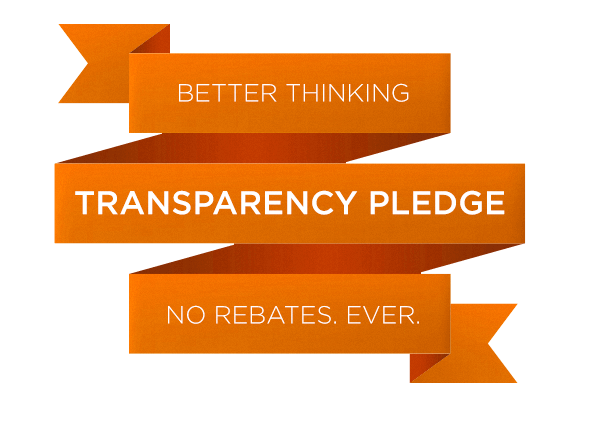Published on

We Three Keywords
The 2019 holiday shopping season is a compressed this year. If you haven’t already, now is the time to start optimizing your paid search accounts to maximize your efficiency and drive Q4 sales. Can’t wrap your head around what to do (see what we did there)? To help, we put together a quick checklist to help make sure your paid search accounts are performing at the top of their game.
1. Highlight your big sales
Promotion extensions are an ad type available in Google that calls out a promotion directly in a text ad, and bolded for emphasis. The can be defined for a specific holiday, allowing advertisers the ability to highlight an offer, without taking up valuable ad space that can be used to talk about your brand. When setting these up, don’t forget to set end dates so the offer ends at the appropriate time. You’ll also want to make sure the offer is prominently displayed on the landing page, with a clear call to action.
For advertisers out there that don’t focus on discounting, we recommend highlighting what makes your product/service stand out vs. your competitors. Consumers like to focus on the positive and calling out your best features will go a long way in getting that sale.
2. Have a holiday bidding strategy
As consumers look to find the best deals, paid search becomes increasingly competitive as advertisers compete to win over customers and get the sale. That said, we recommend looking at historical data and having a bidding strategy that is slightly more competitive then the year prior. You’ll want to make sure that any bidding you have in place, utilizes historical data and takes into account higher costs as the holiday gets more competitive. If you don’t have historical data, use ROI as a guide. As we get further into the holiday season, continue to closely monitor your account to make sure you’re getting the traffic volume you need.
3. Conquest the competition
Make sure that your competitive campaigns are up-to-date, and if you don’t have any set-up, do that now! While competitive terms tend to be more expensive due to lower quality scores, bidding against competitors can be advantageous as it allows you to conquest against the brands that currently own the traffic.
A few ideas include direct competitors, but also upsells and similar use products. This allows you to diversify your competitive set and open up your brand to new consumers. We also recommend keeping a close eye on your own brand terms and make sure your bids are sufficient enough that your ads maintain a high impression share to ward off that same competition.
4. Bundle up!
While shopping holidays like Black Friday and Cyber Monday are synonymous with discounting, not all brands choose to discount their prices. If that’s your business, you may want to consider bundling products together; reducing the combined price when paired together and providing a deal without a discount.
5. Align your click and mortar storefronts
Do you have an Amazon storefront? Make sure that it aligns with your brick and mortar locations and website. This means showcasing the breadth of products that you offer, as well as highlight your highest sales volume, and most profitable and reviewed products prominently. This helps to showcase product popularity, giving an additional incentive to purchase and browse other areas of your Amazon store.
6. Make it easy on mobile
Google continues to place a greater and greater emphasis on mobile. They recently rolled out new mobile status bars that indicate page speed, and with every second in page load time, you risk alienating customers and driving them to a competitor that provides a better mobile experience. The most common issues that we tend to see are heavy file weight images, Excess tags on site, and confusing layout. To combat this, make sure to compress all images, or if needed, host on the cloud. Most important, look at your site as a consumer. Is it easy to navigate, are products properly categorized, are easy to find?
7. Slice up your audience like a pumpkin pie
While search signals are already powerful, enhancing them with additional signals like CRM, affinities, and in-market segments can help drive additional efficiency, both across bids (leading to different ROI outcomes), and creative messaging. Segment out CRM lists, such as frequent purchasers, high long-term value, and purchase lag to further refine targeting. When scalable, you can also serve these valuable audiences unique creative and incentivize converting. Lookalike modeling can also be used, which works by profiling behaviors and profile characters of those in your CRM list, and creating brand new audiences. Make sure to frequently update these lists for accuracy and quality of data.
Custom audiences are also now available in search, where you can pair audiences together with “and” statements to make powerful audience segments to further refine your SEM campaigns.
8. Paid search also means Amazon
For many shoppers Amazon is their de facto product search engine, we are seeing the trend of people including the term Amazon in their Google searches (i.e. “Veer Wagon Amazon”). We recommend taking advantage of this traffic and bid against those terms directly, creating dedicated ad copy to either drive to your website, or directly to the Amazon listing.
9. Learn from Amazon
Amazon source tags allow advertisers the ability to analyze how outside paid and organic media is influencing sales on Amazon. Consider adding a source tag for any buy buttons on Amazon that drive to your Amazon store, source tags for any social media pages where Amazon content is being shared, paid search, social, programmatic, etc. Just be sure to develop proper naming conventions to ensure easy analysis of the data.
10.Give social some love
Most of what we’ve already covered is also true for social, just make sure your creative is on point. This means focusing on audience, creative, and formats. You want to serve the right creative to the right audience across multiple formats. More tailored messaging using data about that consumer can help increase site visits and conversion rates and leveraging multiple ad formats will help to build reach, as well as showcase other products. Finally, Facebook has come out with a collections ad format where you can leverage a video or static image and feature a collection of products underneath it. Just make sure the products pair well and are relevant as a group.
11. Close the deal
Leverage dynamic re-targeting to serve product level targeting ads after someone either views a product, adds to cart, or abandons their cart. Depending on budget and scale, you may want to set different bids, messaging, and call to action to drive higher conversion rates. As an example, you may want to have an ad that speaks more to value proposition if you just view the product page, but use a discount offer if they’ve abandoned their cart knowing they are in the purchase mindset.
12. Don’t forget to enjoy the season!
The holidays are exhausting. Don’t forget to take time for family, friends, and yourself. Enjoy that eggnog, you’ve earned it!
Is finding a partner to help with your marketing at the top of your wish list? Click here and cross that one off your list!

